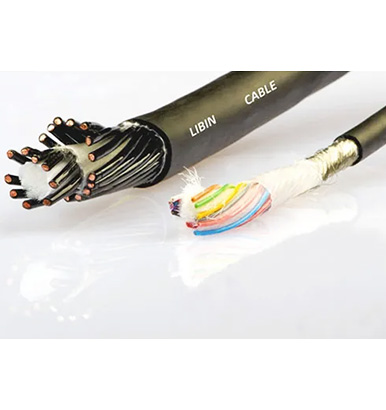Robot Torsion Resistant Cables are engineered to endure continuous twisting and rotational movements in robotic applications. Combining flexibility, durability, and advanced shielding, these cables maintain signal integrity and reliable power transmission even under high torsional stress. Designed for robotic arms, automated machinery, and industrial automation systems, torsion resistant cables ensure smooth operation, precise control, and long-lasting performance.
Torsion resistant cables offer several key functions that make them essential in robotic systems.
Engineered to handle repetitive twisting motions without conductor fatigue.
Maintains electrical performance even under dynamic movement.
Shielded construction minimizes electromagnetic interference (EMI) and crosstalk.
Ensures reliable communication between robotic components.
High-quality conductors deliver consistent voltage and current.
Suitable for motors, sensors, and control units.
Resistant to abrasion, chemicals, and temperature variations.
Long operational life reduces maintenance and downtime.
| Feature | Benefit |
|---|---|
| Torsion Resistance | Handles continuous twisting without damage |
| Signal Integrity | Reduces EMI and maintains reliable communication |
| Power Transmission | Stable voltage and current delivery |
| Durability | Resistant to abrasion, chemicals, and heat |
Proper handling and operation maximize cable performance and lifespan.
Inspect the cable for visible damage or wear.
Verify connectors and conductor continuity.
Ensure cable length and type match the robotic system requirements.
Prepare the routing path and secure cable supports.
Confirm that bend radius and torsional limits are within specifications.
Attach connectors firmly to the robot’s control and power units.
Ensure proper alignment to prevent strain or disconnection.
Observe initial movement to verify smooth torsional action.
Monitor for abnormal resistance, overheating, or signal loss.
Conduct periodic checks for insulation wear, kinks, or connector issues.
Perform signal integrity and voltage tests as needed.
| Step | Action | Notes |
|---|---|---|
| Pre-Operation Checks | Inspect cable and connectors | Prevents operational errors |
| Installation Prep | Plan routing and verify bend radius | Ensures smooth movement |
| Connection | Secure connectors | Avoid strain and disconnection |
| Operation Monitoring | Observe torsional motion | Detect issues early |
| Routine Inspection | Check insulation, kinks, and signal integrity | Maintains long-term performance |

Adhering to safety and handling guidelines prevents damage and extends cable life.
Do not exceed specified torsion angle or cycles.
Avoid sharp bends, crushing, or pinching.
Keep cables away from high temperatures, moisture, and corrosive chemicals.
Avoid direct sunlight for non-UV-resistant jackets.
Disconnect power before installation or maintenance.
Avoid exposure to high-voltage sources.
Ensure connectors are properly aligned and secured.
Do not force connectors or bend pins.
| Precaution Type | Recommended Action |
|---|---|
| Mechanical Safety | Follow torsion limits, avoid sharp bends |
| Environmental Safety | Protect from heat, moisture, chemicals |
| Electrical Safety | Disconnect power before handling |
| Connector Handling | Properly align and secure connectors |
Following these steps ensures fast, safe, and reliable installation.
Verify cable model, length, and specifications.
Inspect cable and connectors for defects.
Plan cable path along robot arm or equipment.
Maintain minimum bend radius and avoid torsional overstress.
Attach connectors firmly to control units, motors, or sensors.
Lock connectors if equipped with securing mechanisms.
Use cable clips or ties to hold cable in place.
Avoid over-tightening to maintain flexibility.
Conduct continuity, voltage, and signal integrity tests.
Confirm smooth torsional movement during operation.
| Step | Action | Notes |
|---|---|---|
| Preparation | Verify cable specs and inspect | Prevents installation errors |
| Routing | Plan path and maintain bend radius | Avoid kinks and stress |
| Connection | Secure connectors | Ensure firm attachment |
| Securing | Use clips or ties | Prevents movement |
| Testing | Continuity and signal integrity check | Confirms proper operation |
Robot Torsion Resistant Cables provide reliable, flexible, and durable solutions for robotic systems requiring continuous twisting and rotational movement. With proper handling, adherence to usage precautions, and following installation guidelines, these cables ensure high performance, reduced maintenance, and long operational life. Selecting high-quality, certified torsion resistant cables enhances precision, safety, and efficiency in modern industrial automation and robotic applications.
يستخدم هذا الموقع ملفات تعريف الارتباط لضمان حصولك على أفضل تجربة على موقعنا.